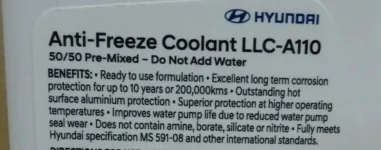1. G-05 is the tradename for HOAT from the 1980's that was developed by BASF or Glysantin. The original HOAT was used by Mercedes, Ford, Chrysler, and several mores European makes in the 80's up to the 00's as a factory coolant but is now replaced.
2. Silicates not silicone is are generally found in HOAT's to help with corrosion protection in the short term.
3. Asian Red is a P-OAT or P-HOAT, just a OAT coolant with some phospate added that is dyed red. All the Asian makes are now using P-OAT's that are essentailly all the same with the biggest difference the colour of dye they add to their product (Toyota = red, Honda = blue, etc).
4. Dexcool is GM's tradename for it's OAT coolant. For an OAT to be Dexcool it needs to pass GM's performance test and pay GM to use the name. So Dexcool is just GM's OAT, and there are many OAT's out there.
5. Modern OAT based coolants are adding phosphates and/or silicates to generally help with corosion protection in the short term. It's now became more popluar to add phopshate to OAT or Si-OAT coolants because it solves issues with CAB brazed heater cores used in some vehicles made very recently. Ford has switched from a OAT to P-OAT recently, and BMW and Volvo switched from Si-OAT to PSi-OAT's because of this reason.
6. There's always Google, but just remember that now everbody is using OAT based coolants so you really can't mess it up, at worst the colour could change (but the universal OAT's use a very light dye that solves that potential problem).
One last thing is don't worry about 2-EHA, many modern factory and aftermarket coolants use it and it's perfectly fine. GM used some garbage gaskets back in the 90's that failed early regardless which coolant was used and some people (wrongly) concluded it was the work of 2-EHA and hence the misinformation has been spreading since then.
This is super informative, thanks for shedding light on the G05 designation, that makes sense. Also, good to know that all the bad stuff I am reading about 2eha isn't quite true.
Thanks!

